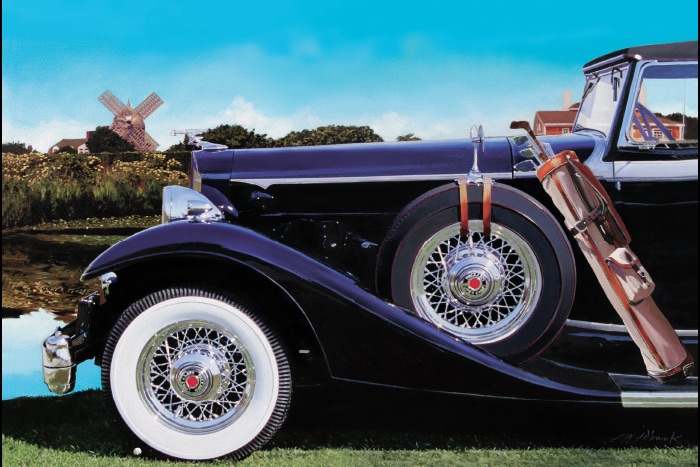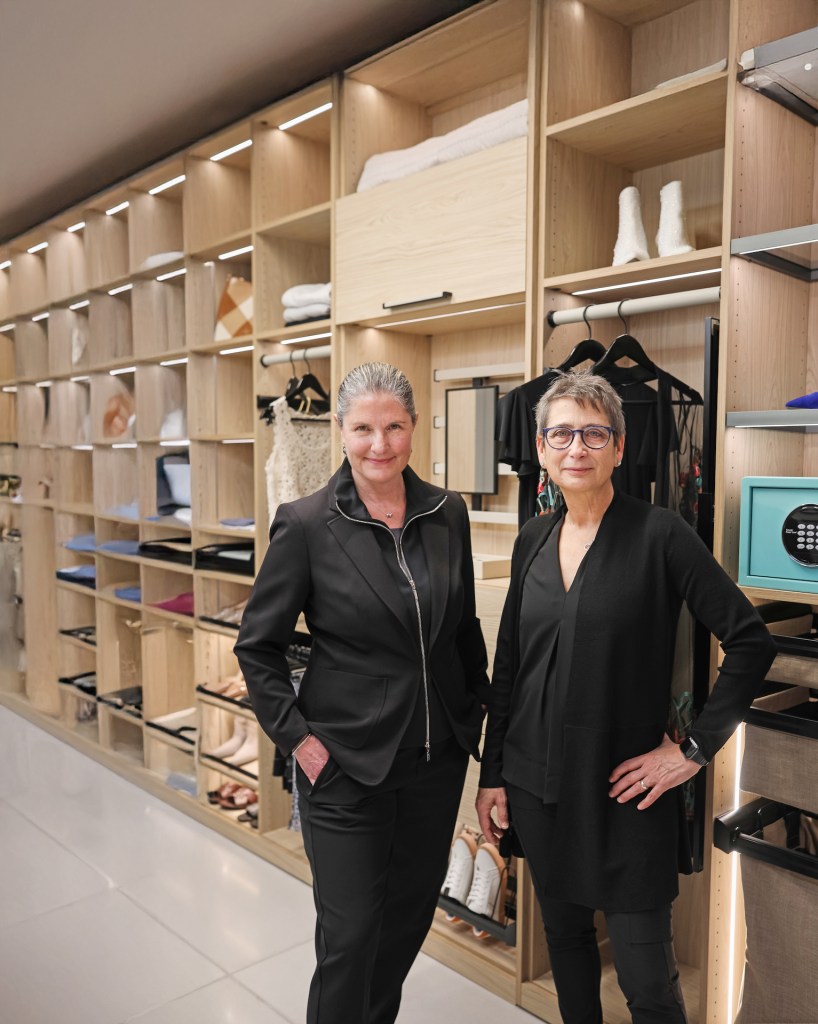Dan's Papers Cover Artist Charles Wildbank Paints a Classic Car

Charles Wildbank created a sensation on Fifth Avenue with his seven–foot–tall, photorealistic painting of a Cartier diamond. It was the same year he painted his portrait of David Hockney. Today, he is known for his versatility on a range of themes including florals, still lifes, portraits and seascapes.

What was the inspiration for this piece?
I spotted this gorgeous Packard at one of the earlier concours in Bridgehampton years back. I was impressed in seeing the golf gear attached on one of the runners on the side. Its setting is Lake Agawam with a windmill looming in the background, hence the title, “Hampton Weekend.”
Looking through your website, I see a lot of paintings of cars. What draws you to cars as a subject?
Preservation is big on my list so I took to classic automobile tours around the country from Pebble Beach to Barrett Jackson Auctions in Scottsdale to Newport, Rhode Island and as far north as Niagara and south as Palm Beach.
Do you have any fond memories of a favorite car—what we might now call a classic car—from your younger days?
In my youth, I loved the alien–looking Citröens in Paris. I bought one for myself when I lived and worked as a teacher in Montreal during the ’70s. I’ve taken a liking to classic cars ever since I was a toddler in my dad’s first car, a Studebaker “Bullet Nose” model, and, as I grew up, a rocket–shaped Thunderbird when I was first given the car keys for the junior prom. There’s too much nostalgia to fail to take notice.
How long have you been creating art?
I’ve been an artist most of my life, since I first held a crayon or pencil. Perhaps it may have had to do with my deafness since birth? My drawing ability gained practice long before I learned to speak, mostly out of necessity, as a desperate means of communication among family and friends, grownups especially, when I wanted something, which I’d draw and show.
Is there one piece of advice or wisdom you’ve received from another artist that you’ve always remembered?
Perhaps the best unspoken advice for all aspiring artists is to visit the museums and art galleries, scrutinizing each art form. Another blessing would be to have met such artists while they are living. When I met artist David Hockney during my 20s, I spent the entire day in his studio taking pictures. Hardly any words had been exchanged for he was a dedicated workaholic, or better, an art–aholic. I was so inspired that I painted his portrait, which hangs in my studio to this day.
Are there any photorealists whose work you admire, and who you think admirers of your work should know?
Charles Bell, Audrey Flack, Chuck Close, Anthony Brunelli
What draws you to photorealism ?
What makes photorealism tantalizing for me is not just that it appears real or photographic but somehow infused with a vibrant energy with some exaggeration strategically set in certain areas on the canvas, taken into a totally new context somehow through the artist’s masterful brushstroke. Most always, there’s bound to be some apprehension of getting past the daunting detail to be undertaken with care and it comes with a very high price: time.
Where can we see more of your work?
My works can be seen at the William Ris Gallery in Jamesport, near where my studio is. Patrons can make studio visits or find me at art fairs during warm months. My 20–foot–high murals can be viewed onboard the Queen Mary 2, if you plan on taking a cruise. My website is wildbankfineart.com.



